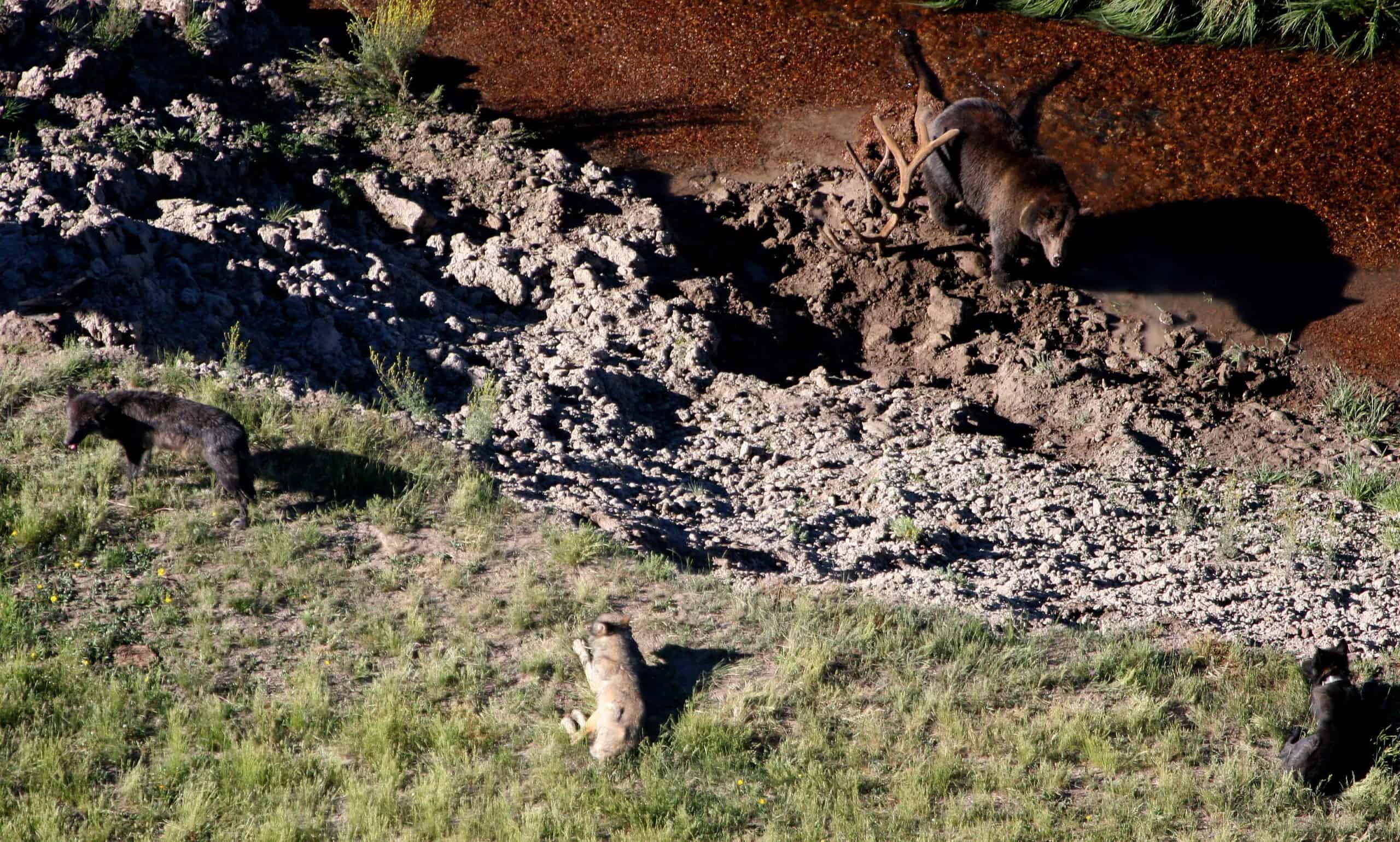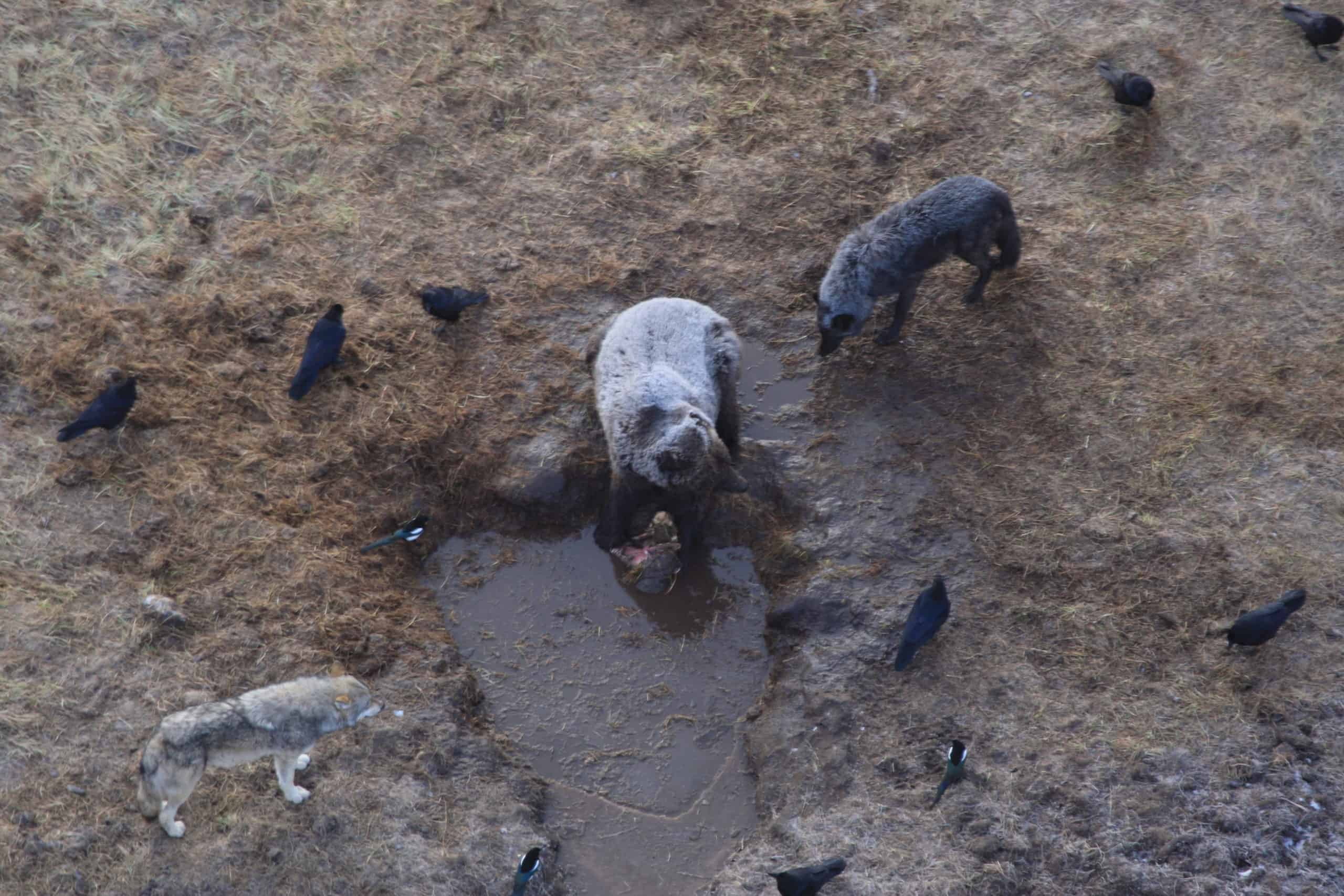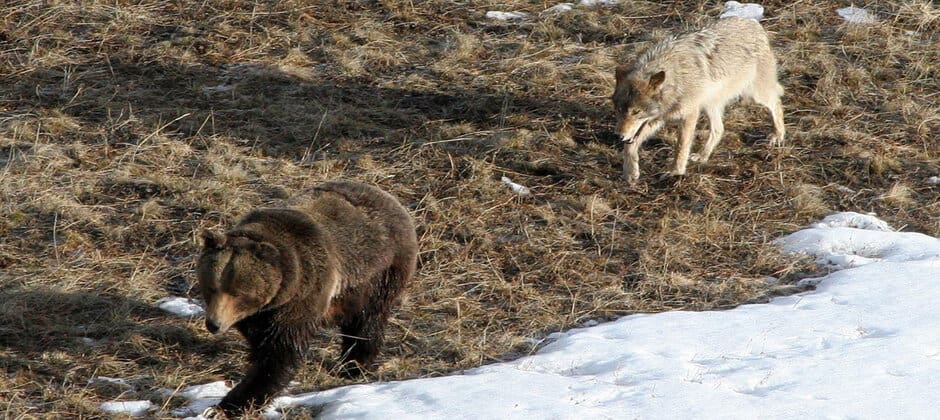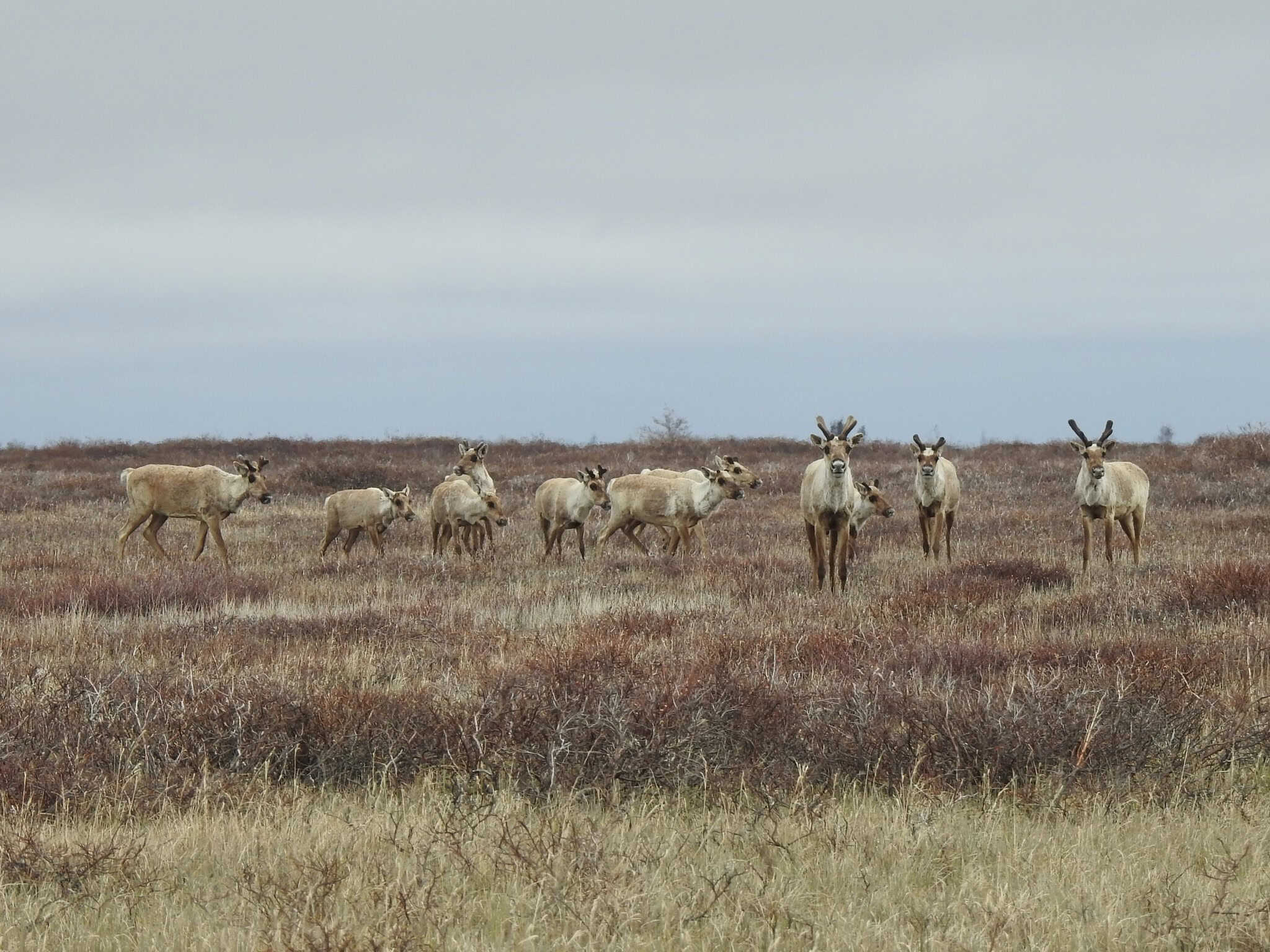Share this article
Bears change wolf feeding habits
Bears and wolves coexist in both Yellowstone National Park and 5,000 miles across the globe in parts of Scandinavia. But researchers recently found that in both places, bears are changing the way wolves eat despite their focus on different prey species.
When Aimee Tallian was seeking an additional research topic for her PhD at Utah State University, she considered her previous experience with bears and wolves in Yellowstone. Realizing those species also co-occur in Scandinavia, she reached out to researchers in the Scandinavian Wolf Project to collaborate.
“I was super interested in both species,” Tallian said. “The interactions between bears and wolves really jumped out for me.”
Tallian and her colleagues used data on brown bears (Ursus arctos) and wolves (Canis lupus) in Scandinavia and in Yellowstone to figure out how the two predators interacted. In Yellowstone, bears and wolves coexist throughout the park, while wolf and bear ranges overlap in some parts of Scandinavia, and wolves live without bears in others.
They suspected that in both of these areas, bears would drive wolves away from their kill sites, causing the larger predators to kill more ungulates over time. “Our hypothesis was that wolf kill rates would increase because bears would steal their food,” Tallian said. But, their results showed the opposite, and they decided to conduct more research to disentangle why.
In a study she led in Ecological Monographs, Tallian and her team described why wolves kill less when bears are around.
Researchers used the same method to collect data on wolf kills in both places. The Yellowstone data, which came from the Yellowstone Wolf Project, dates back to 2008. Scandinavian data was collected from 2002-2015. “Both of these systems have long-term wolf research projects we were able to take advantage of,” Tallian said.
In Yellowstone, wolves primarily killed elk (Cervus canadensis) in the summer, while in Scandinavia their meal of choice was moose (Alces alces).
Tallian and her colleagues followed individual wolves to recently killed prey using location points gathered by GPS tracking collars. In Yellowstone, they also looked for bear signs at each location and leveraged the GPS data to find out how long wolves stuck around eating and digesting kills. In Scandinavia, they compared how long wolves hung around their kills and the amount of time the wolves searched for prey between areas where wolves overlapped with bears and areas where they did not.

A bear feeds on a bull elk with a wolf nearby. Credit: Dan Stahler/NPS photo.
Elk give birth in early summer in Yellowstone, providing highly vulnerable neonate prey for wolves and bears.
This is a tough time for wolves, said Matt Metz, a research associate with the Yellowstone Wolf Project who was a co-author on the study. “These interactions are largely occurring during the time of year wolves are having the hardest time,” he said. They spend a lot of time tending to their pups at the den. As a result, wolves handled their prey longer, because they lose access to feeding on it when it’s taken by a bear.
Tallian said the result may be interference competition, when bears confront wolves and scavenge wolf kills.
In Scandinavia, this was likely happening, too. “We found somewhat similar patterns between the two systems, even though we were looking at very different analyses and interpretations,” she said.
However, the Scandinavia data revealed another kind of competition that happens when bears don’t just steal food, but eat so much that they make fewer prey available for wolves.
In Scandinavia, wolves prey primarily on moose. The team found that during the spring, wolves spent more time at kills, while search time remained the same. “In spring, wolves may be dealing with bears being around their kill sites,” she said. “When wolves move away and come back more often, they can lessen their interactions with bears. But this increases the amount of time it takes to deal with their kill.”
However, during the summer with more neonate moose around, search time increased and time at kills remained the same. They are forced to search more for food when bears take a lot of the moose from the population. “The summer is like an Easter egg hunt,” Tallian said. “If there are 100 eggs out there, it takes less time to find five than if there were only 50 [out there].”

A bear on a mostly submerged bison carcass. Credit: Kira Cassidy/NPS photo.
The researchers said the study unravels some unknown information about apex predator interactions. “The reality is they affect one another,” she said. “Their presence on the landscape affects others’ predation patterns.”
While it hasn’t been studied yet, wolf and bear interactions may affect each other’s population dynamics. It’s also important to know predator dynamics for rewilding efforts, she said. If people want to bring wolves into a landscape, they should be aware of their possible interactions with other predators.
“None of these species operate in a vacuum—instead, the interactions between species often affects the other’s behavior,” Metz said. “Places like Yellowstone serve as an ecological baseline, important for conservation efforts. It shows us how a system that is relatively intact functions and how that changes through time.”
Header Image: Wolves’ kill rates decline when bears are around. Image Credit: U.S. National Park Service photo








